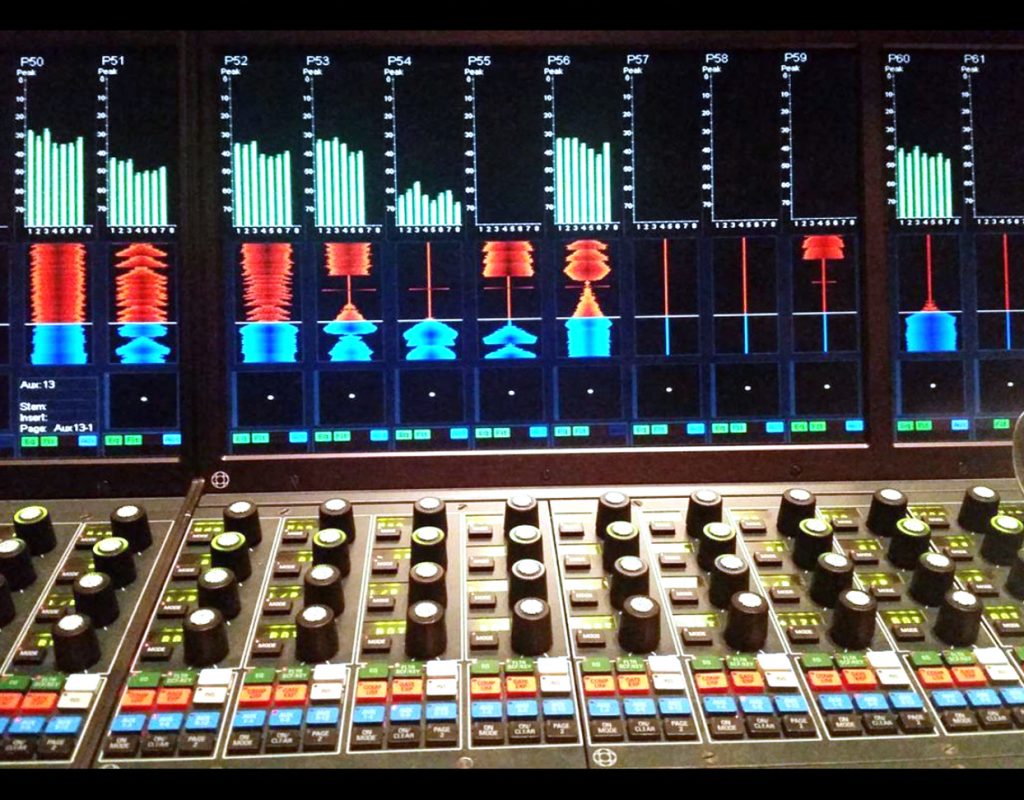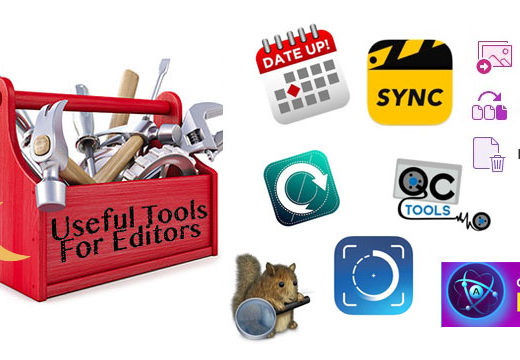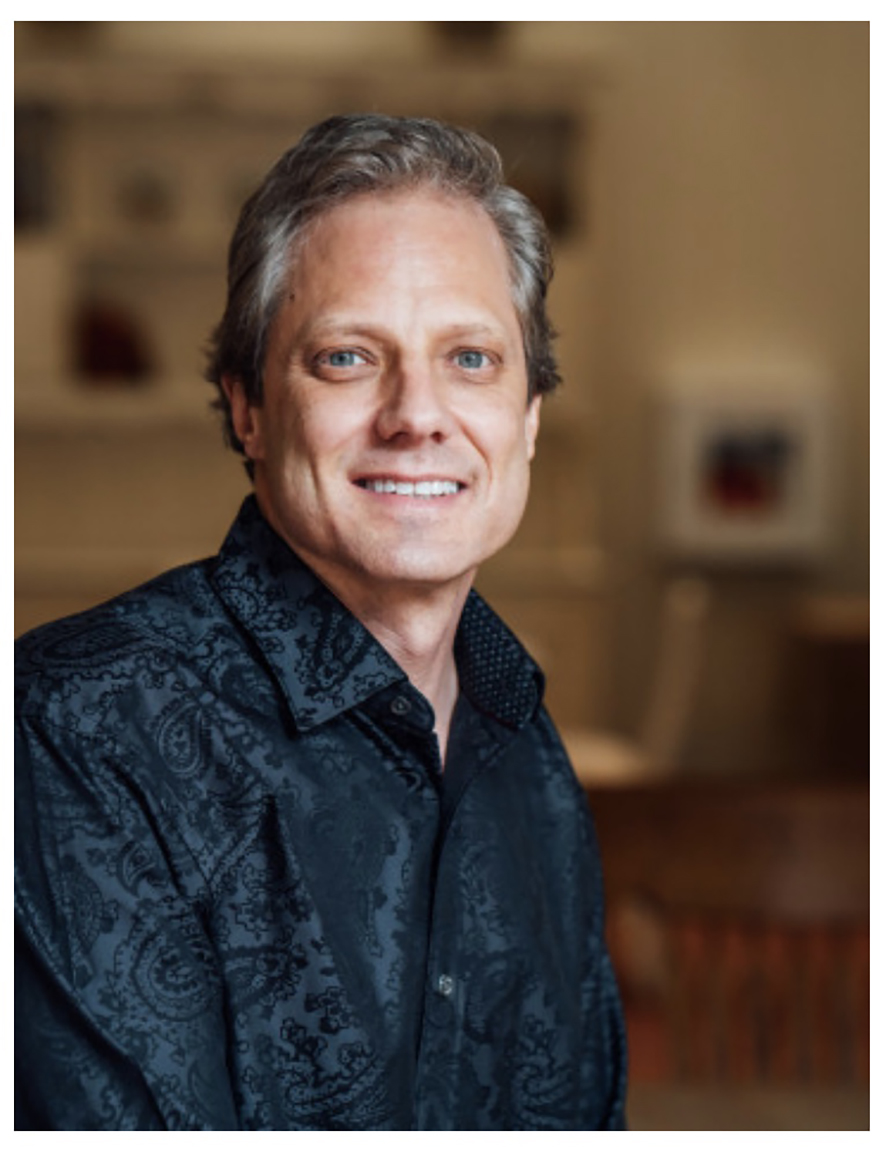 Michael Semanick is an award-winning rerecording mixer of some of the most creative and celebrated films to come out of Hollywood in recent decades. He’s collaborated with the finest film storytellers working today like Tim Burton, David Fincher, Peter Jackson, and Brad Bird to name just a few. His diverse film work has garnered 11 Academy Awards nominations and winning two: The Lord of the Rings: The Return of the King and King Kong. He’s equally comfortable creating soundscapes for live action blockbusters like The Last Jedi as he is with animated features like Wall-E and The Incredibles. Although his outstanding career spans decades, in just 2018 alone he mixed Welcome to Marwen, Spider-Man: Into the Spider-Verse, Hotel Transylvania 3: Summer Vacation & Incredibles 2! Obviously, a man more interested in perfecting audio and creating compelling soundtracks than sleep.
Michael Semanick is an award-winning rerecording mixer of some of the most creative and celebrated films to come out of Hollywood in recent decades. He’s collaborated with the finest film storytellers working today like Tim Burton, David Fincher, Peter Jackson, and Brad Bird to name just a few. His diverse film work has garnered 11 Academy Awards nominations and winning two: The Lord of the Rings: The Return of the King and King Kong. He’s equally comfortable creating soundscapes for live action blockbusters like The Last Jedi as he is with animated features like Wall-E and The Incredibles. Although his outstanding career spans decades, in just 2018 alone he mixed Welcome to Marwen, Spider-Man: Into the Spider-Verse, Hotel Transylvania 3: Summer Vacation & Incredibles 2! Obviously, a man more interested in perfecting audio and creating compelling soundtracks than sleep.
Since Michael has such a wide range of expertise in both animation and live action film, I asked him what, if any, were the different approaches in his process with audio post.
Michael Semanick: I approach it exactly the same. I look at what the director is doing. Whether it’s drawn on a computer or it’s shot with a camera, I look at them as films. As far as storytelling, it’s the same for me. The director is just telling a campfire story. We’re just telling stories to people.
If they sit there on a stage against a green screen – is that animated or is that live action? It’s starting to blur the lines. Was “The Jungle Book” a live action or animated show? Is “The Lion King”, coming up, live action or animated? I don’t think they have real lions doing that stuff! [Laughs]
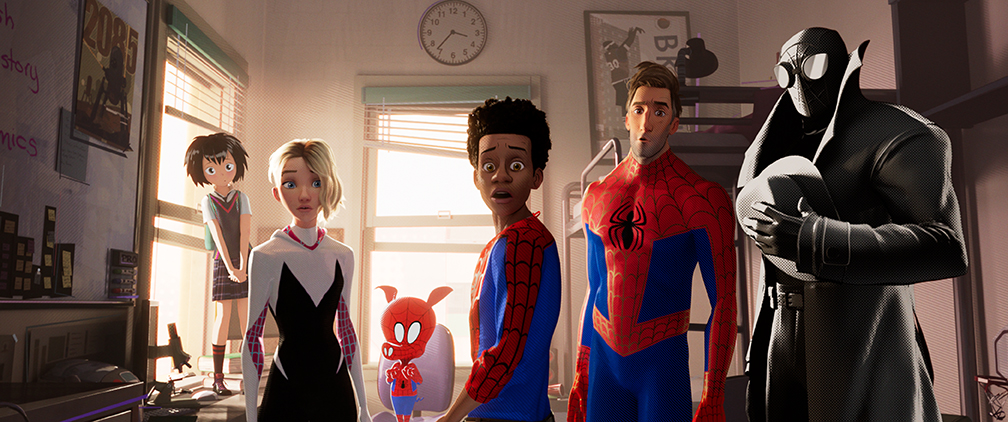
For me, approaching each movie sonically: you do the Foley, you have to do backgrounds, you have to do sound effects, the composers compose emotionally to each scene – it’s the same, whether it’s live action or not. We’re making movies and telling a story, whether that camera tracks in with a real camera, or tracks in with a computer. It’s fascinating to me with all of film history and people experimenting, it’s all just really the same.
Michael muses about the artistry and creativity being done in animated features today.
MS: I wasn’t around in the 70’s to make movies, I was a little kid, it really feels to me that [today] it’s like 1977 in the animation world. It’s kind of crazy. There’s craziness going on. [Laughs] The picture is not locked, the story is changing, we’re working long hours, we’re working crazy – but we’re making good movies. Sometimes it’s just insane.
This feels like what I imagine it was like in 1975, when they were making all those fun, crazy movies, movies that had all this character to them. Not that the other decades didn’t, but now, the animation world feels like they are stretching the boundaries – pushing hard, I mean really hard. They’re pushing the studio system, out of its traditional comfort zone. That means in delivery, that means in how the films are being made, that means how close to the wire they’re getting – all because of story. They just want the story to be good. They’re pushing animation departments to get better, and they are pushing sound departments to the brink, literally down to the last second. They keep pushing the envelope on things. It’s taxing, but at the same time it’s crazy and fun.
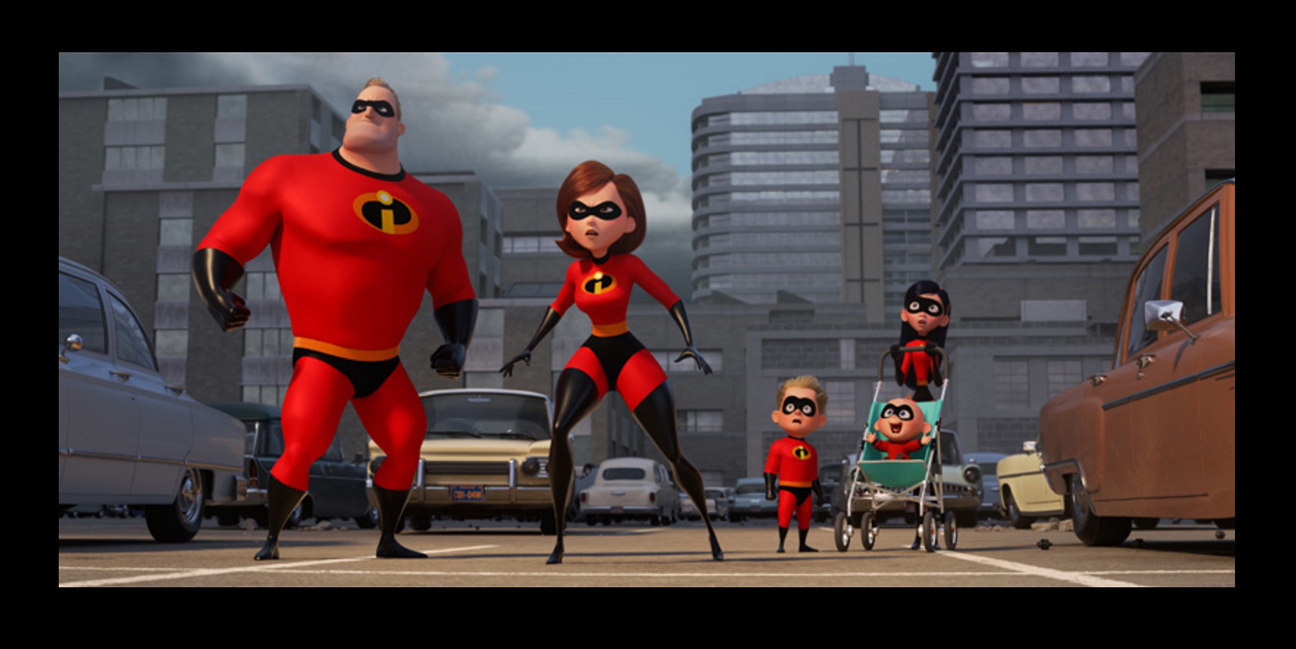
It’s a different time now, than when we were going to see them, you and I, Woody. I loved animated films, but they were, I hate to say it, kind of cartoons. Now it’s become the normal – they don’t even think of it as animation! They are just going to see a movie. I think that’s a good thing, and I think animated directors deserve a bit more respect than live action directors have gotten. It was really the 1970s that solidified the live action directors, they were pushing the envelope. I see that in animation now, I see directors pushing the envelope, pushing the status quo, pushing producers to pull their hair out, pushing studios to say, “you’re insane – what are you guys doing – this is unbelievable.” [Laughs] But the movie comes out and it’s great.
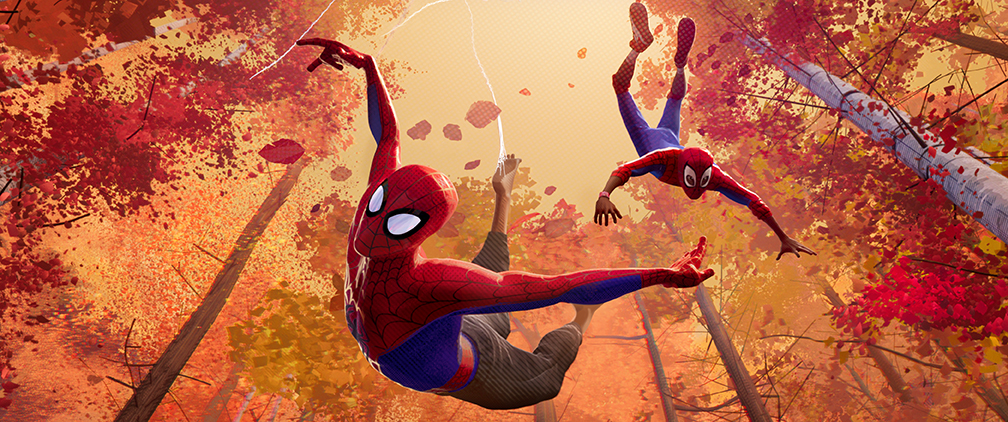
You want everyone to say – “I’m going to a movie”, and it just happens to be animated, you know?
Michael and I discussed some of the spectacular sequences in “Incredibles 2”. Often, audiences get caught up in the visual storytelling, the stellar animation, and completely forget that every frame of audio is also created fresh, original and unique, from the ground up. One section in particular that we talked about was a moment with a newscaster, the story/images/audio all follow a path through the broadcast wires, across space, and finally ending up being heard over a small monitor. The precision and detail in crafting the audio as it follows this image sequence is just one example of the expert feat of sound design and mixing through this movie. Hat tip to Ren Klyce, the sound designer and supervising sound editor of “Incredibles 2”.
MS: You know it’s fun for me, it’s in those kinds of sequences that I can just watch the picture and know what the director wants, because I’m just watching the movie. I’m thinking, “Why is he moving here, why is the camera tracking here, why is it holding here, why is it doing this?”
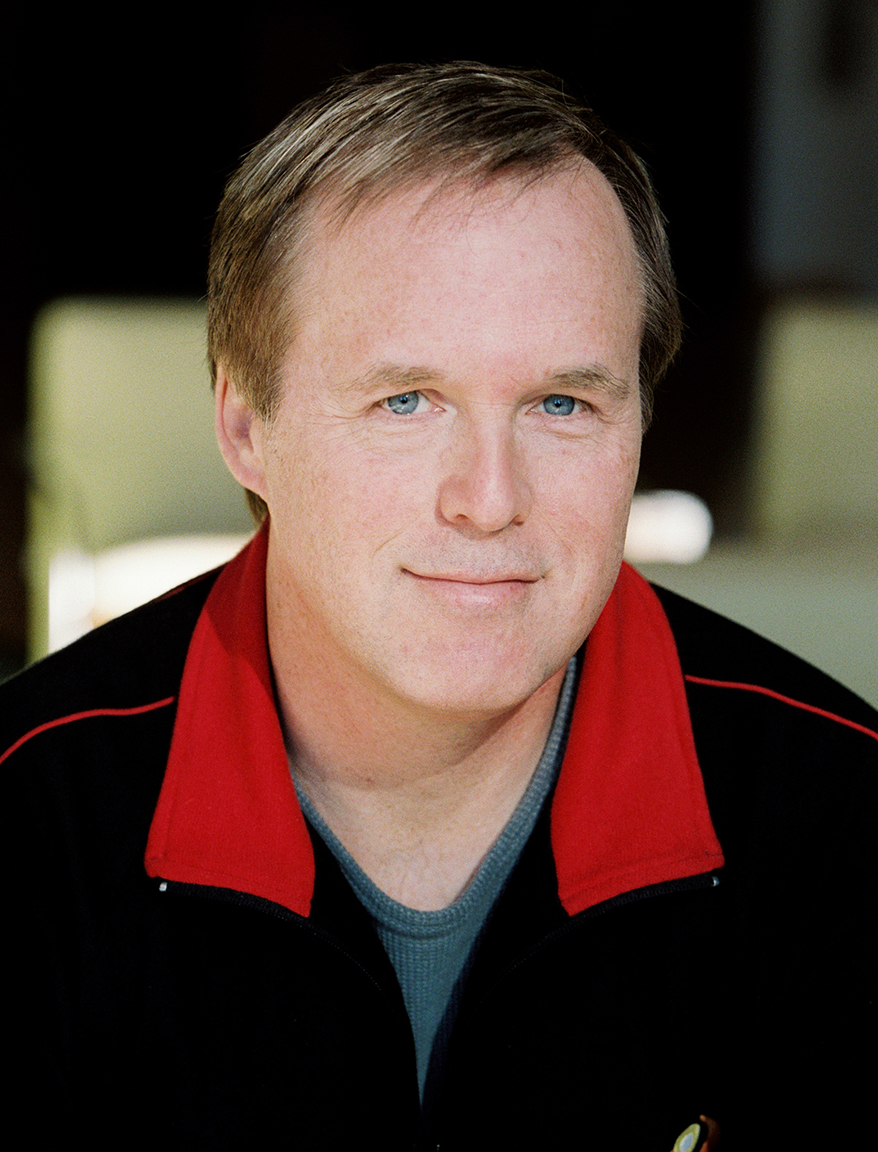
That sequence took us quite a while because Brad [Brad Bird, Director] is very particular about how we lead the audience into what she’s seeing. One of the main things, was making it sound natural. It was just a matter of getting the right futz – [processing of the tracks] and then, how much futz do we do as you go down the wire? And then getting the right bounce on the voice. I had splits on everything [routing of the tracks for processing] and I think Nathan [Nathan Nance, dialog mixer} had all the splits on that stuff too. It was really about let’s see what works and feels natural.
I remember that sequence being a difficult one, but difficult in a fun way, you know what I mean? Brad was – “let’s follow the picture if we can.” It was really trying to set that tone. It was going through the different futzes in a broadcast booth when he’s talking, and it goes over radio waves, in some of those areas we added static to the voice. That sequence was hard – when it was doing the strobing… it was like “fill the room in here, but then it gets narrow there.” We established each of those areas, and then added a little reverb here and there, and then we shifted as the camera tracks up.
One of the key shaping tools in a mixer’s kit is the use of reverbs to define space. Michael detailed some his thinking on using reverbs with me as well.
MS: You know it’s funny, playing with reverbs, you establish it, and then the camera tracks in and you pull the reverb off, as they are getting closer, or if they’re talking intimately. It’s just pulling that stuff down and out that really draws you into the story, or into the characters more, as opposed to just keeping everything up there, and keeping the backgrounds going. Brad was very particular about all that stuff. I love him for his detail like that. You know, most animated directors are pretty detailed because they work on these things for like 3 or 4 years.
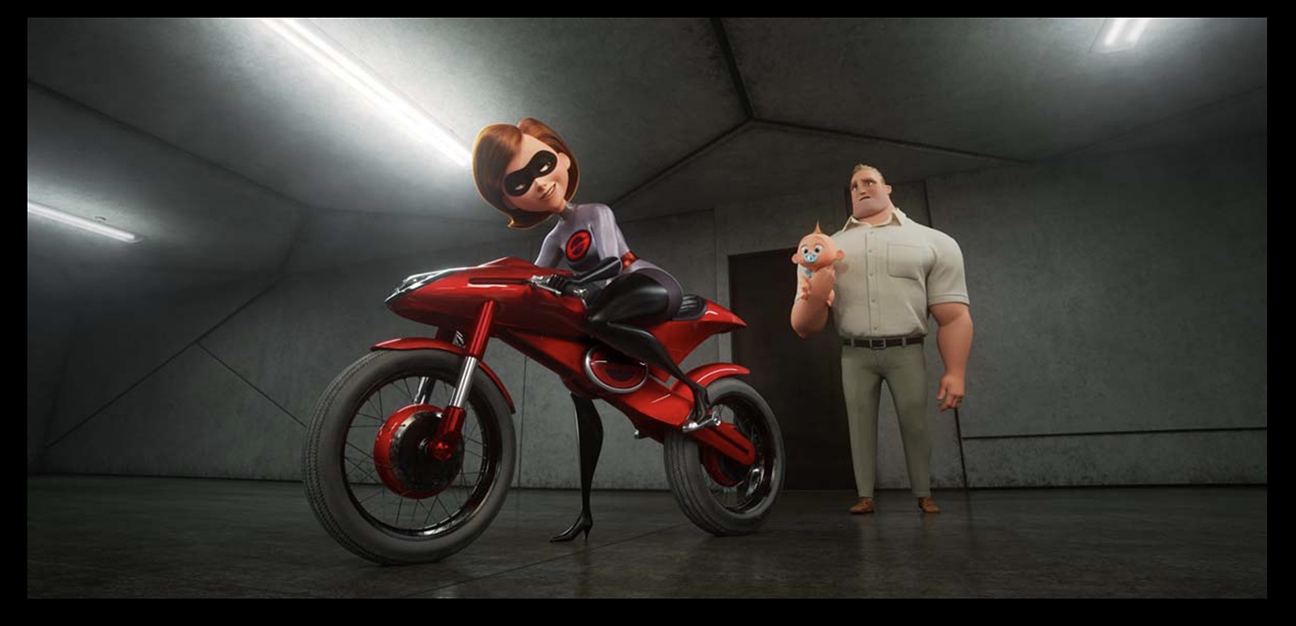
Working with Brad Bird is really fun, I love working with him because he really pays attention and loves sound. Of course, the other side of the coin is that he’s very particular about establishing the environment that you’re in, or the room that you’re in.
I still use the 960 [Lexicon hardware reverb unit] and not the plugin 960, and the TC6000, and not the plugin TC6000. Occasionally, the old 480, they’re a little noisy but I will reach for those.
It’s mostly trying to hit the mark. I do try to change some programs, but my directors will go “no, that’s not quite right” and I end up crawling right back. [Laughs] It’s really just establishing that, and the director goes – “yes that sounds like what I’m seeing”. I work hard to get that.
Michael mixed music and effects on “Incredibles 2”, but on “Welcome to Marwen” he mixed the dialog tracks. Michael has some very specific thoughts about approaching the recorded dialog, and he detailed his precise use of EQ while mixing voices.
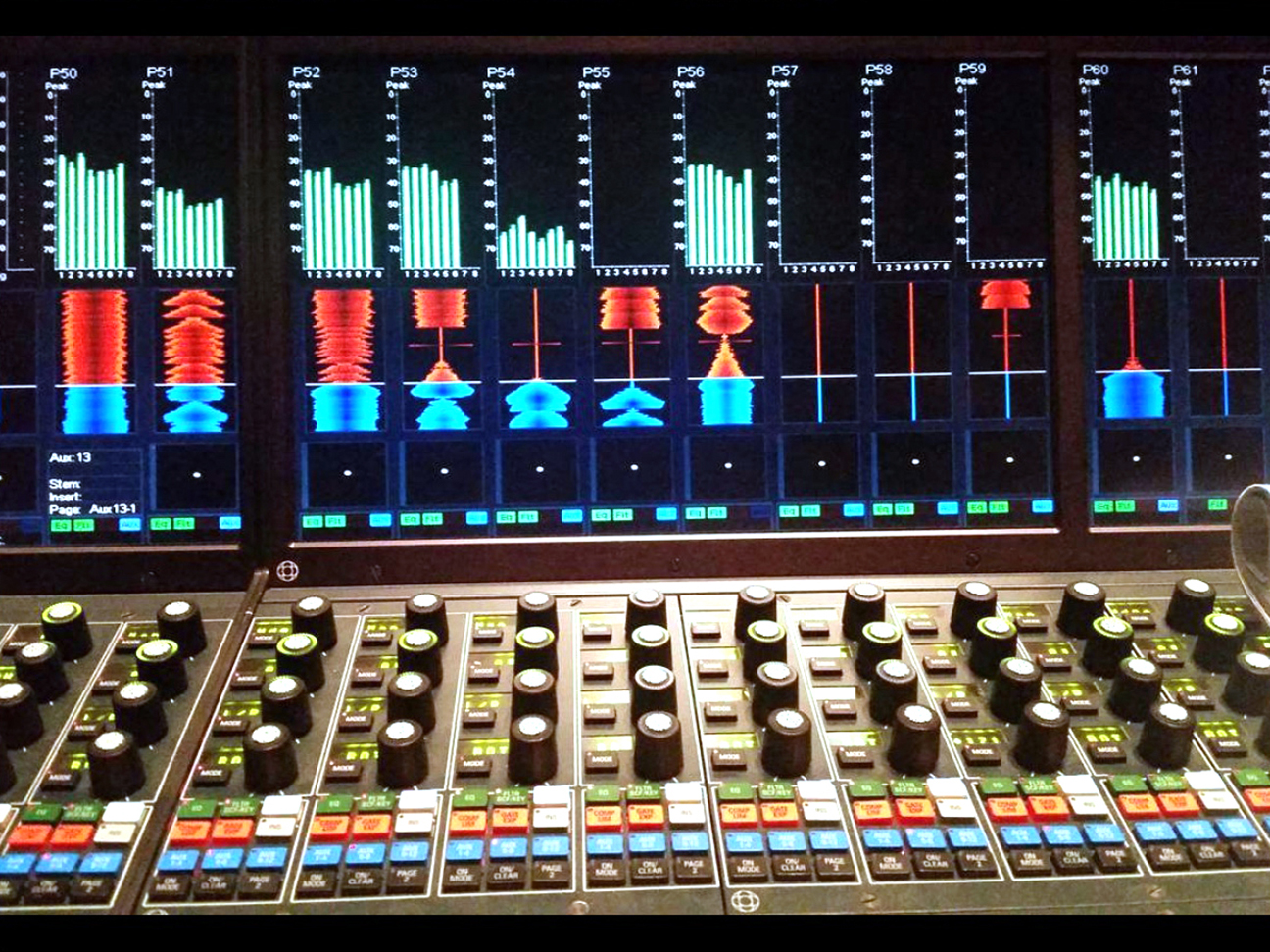 MS: What I do with a human’s voice – – you want to listen to a person’s voice, find those characteristics that’s in their voice, and feature them, or exploit them a little bit. As Mark Berger [Academy Award winning re-recording mixer] would say, “always remember the soul of the voice.” I was like “what is he talking about – the soul of the voice?!” [Laughs] But it’s just how a person finishes a line. And how it resonates. It took me a long time to figure that out. “Oh, they have this kind of tone in the voice.”
MS: What I do with a human’s voice – – you want to listen to a person’s voice, find those characteristics that’s in their voice, and feature them, or exploit them a little bit. As Mark Berger [Academy Award winning re-recording mixer] would say, “always remember the soul of the voice.” I was like “what is he talking about – the soul of the voice?!” [Laughs] But it’s just how a person finishes a line. And how it resonates. It took me a long time to figure that out. “Oh, they have this kind of tone in the voice.”
It’s interesting, because each person has their own characteristics, almost like a fingerprint. Some people are more lisp-y, some people have more high frequencies. And so, I try to exploit that.
You put them through [a console and playback] and start pushing them up [dialog recordings volume levels] and it pokes out frequencies that you’re like – “oh that’s not how that person sounds if you are standing there talking to them.” Because we’re pushing levels up, we’re making it a little louder than normal conversation, you know? When people talk, it’s pretty low. I don’t know if it’s the microphone – they are flatter than our ears – a lot of times it emphasizes certain frequencies. So, I try to find frequencies – to maybe warm this person up, so it would sound like I was talking to him. And then you know, when people yell or shout, their pitch goes up, and sometimes it goes harder. I just try to pay attention…. I don’t want to make somebody irritating or harsh, depending how it’s recorded.
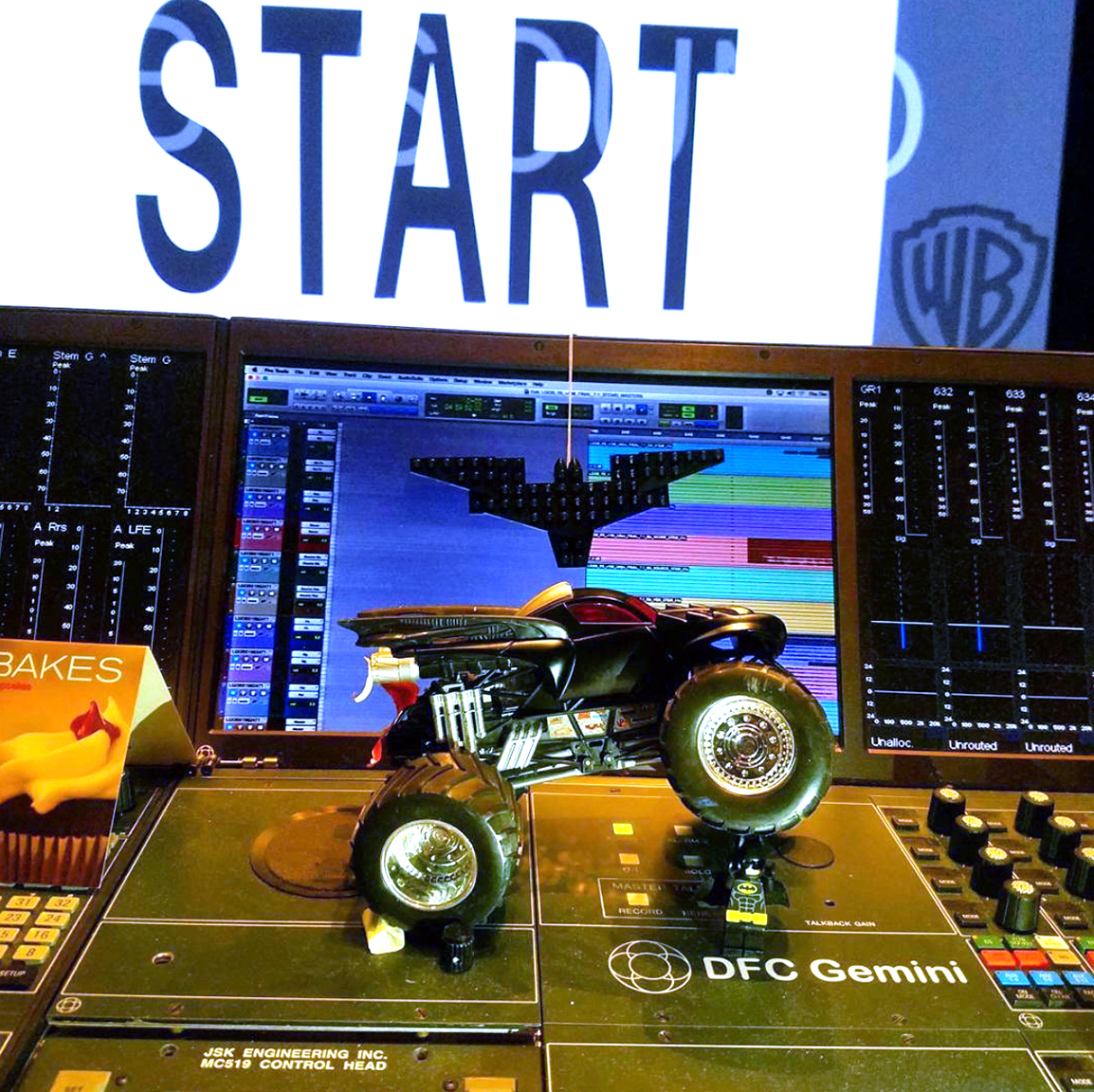
I will use the EQ on the DFC [AMS/Neve Digital Film Console]. It’s a digital board but, it just sounds more musical, the EQ’s. I know some of the plugins pretty well and they are pretty close, and you just have to work them pretty hard to make them not sound harsh. I don’t know if that’s the right word.
I am still traditional [using consoles] because I’m fast at it. The plugins take time, and you can only do one channel at a time. With a console laid out, I can just grab it, and find the frequency I’m looking for.
I still run through a DFC or some type of console, a lot of times, for the futzes. I do use the Lafont Futz Box, [LP-23 telephone simulator] which is an analog box. A lot of times I’ll A/B between settings and, I kid you not, the directors, almost 99% of the time go, “I like whatever that futz is right there” – and it’s going through an analog device!
Michael has worked with some of the finest, most creative directors making films today. They understand the effect that the sound has on the picture edit, the pacing, and the transitions.
MS: Some directors stand out in sound. Fincher [David Fincher, Director] was always good about understanding that. When they are [picture] editing, they are paying attention and realize – “they can fix this in the mix. I think this will work once we get the music and a transition – right now it’s clunky.” They leave a lot to the mix. They’re trying to get the timing of the picture right, but they’ll fix it in the mix. I’m doing crossfades, helping transitions, smoothing things sonically, which seems to help the picture edit tremendously at times.
For the most part on “Incredibles”, Brad knew what he wanted. They [animation directors] spend a lot of time shaking the story down before they go knee deep in full animation. They can do animatics and see if it’s working. Now, the layers of animation, I still don’t know. [Laughs] Brad will say “That is animated. That is locked.” [Laughs] To me, it’s flat as can be, but then they light it, they color time it, and all of a sudden, it’s got depth, and it’s like wait – “that’s the same?” It’s a mystery me to me how they do that stuff. [Laughs]
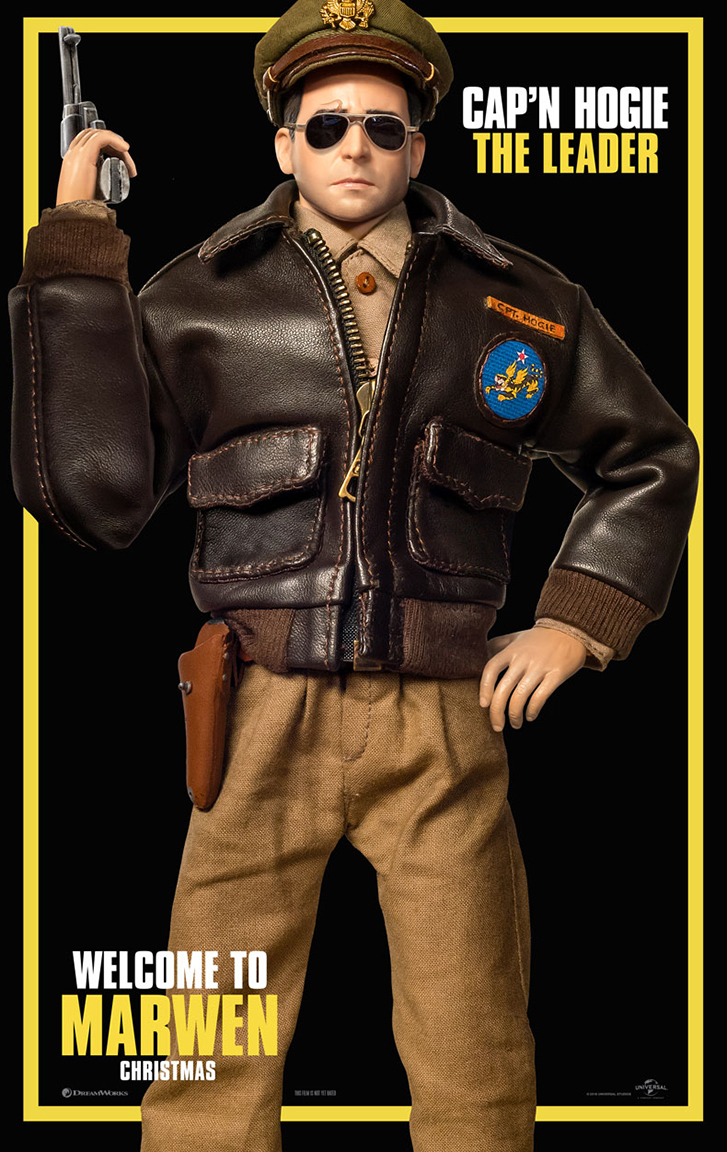 Working with Bob [Zemekis, Director, Welcome to Marwen] was so fun. I love a guy who, you know, he still wants to push the envelope in his own way. He wanted to stretch, do more in the surrounds, and have some fun. It’s fun. We’re having fun here, “let’s try something different.” He was up for that. When you first work with someone like him, who’s so well established in film history like Coppola, and all those guys, you’re a little nervous. People were telling me – “well, he likes to do this, this and that”. I found it to be the opposite. I was told this, that, and that, and when I got in there, he and I connected – in a filmmaker way. I understood his movie very quickly, and just had so much fun, I loved it. He could sense that and then he was like – “hey what do you think if we tried this” – and I say, “But I was told I shouldn’t do that!” – and he says “No, no, go for it!” [Laughs]
Working with Bob [Zemekis, Director, Welcome to Marwen] was so fun. I love a guy who, you know, he still wants to push the envelope in his own way. He wanted to stretch, do more in the surrounds, and have some fun. It’s fun. We’re having fun here, “let’s try something different.” He was up for that. When you first work with someone like him, who’s so well established in film history like Coppola, and all those guys, you’re a little nervous. People were telling me – “well, he likes to do this, this and that”. I found it to be the opposite. I was told this, that, and that, and when I got in there, he and I connected – in a filmmaker way. I understood his movie very quickly, and just had so much fun, I loved it. He could sense that and then he was like – “hey what do you think if we tried this” – and I say, “But I was told I shouldn’t do that!” – and he says “No, no, go for it!” [Laughs]
That stuff was so fun because I connected with this guy who I really respected. Some of his movies I just love. Seeing him make a movie that integrates both live action and animation, it’s really interesting. It’s kind of a cross. I found it really fun. I hope you like it Woody, it’s probably not for everybody, it is kind of a heavy subject matter, but it has a happy ending and feels good.
As can be clearly seen here, discussing his work with Michael, you come away with one thing in particular – he absolutely loves crafting audio and has a lot of fun doing it.
MS: I love the collaboration with people in making a soundtrack, with music, sound effects, and dialog. I love helping the filmmaker put it together and tell a story. I love sitting there and getting it right and the director is saying “that’s exactly what I envisioned, its working so well.” I love that. I want the directors to be successful and I want the movies to be successful, so they can keep making them.
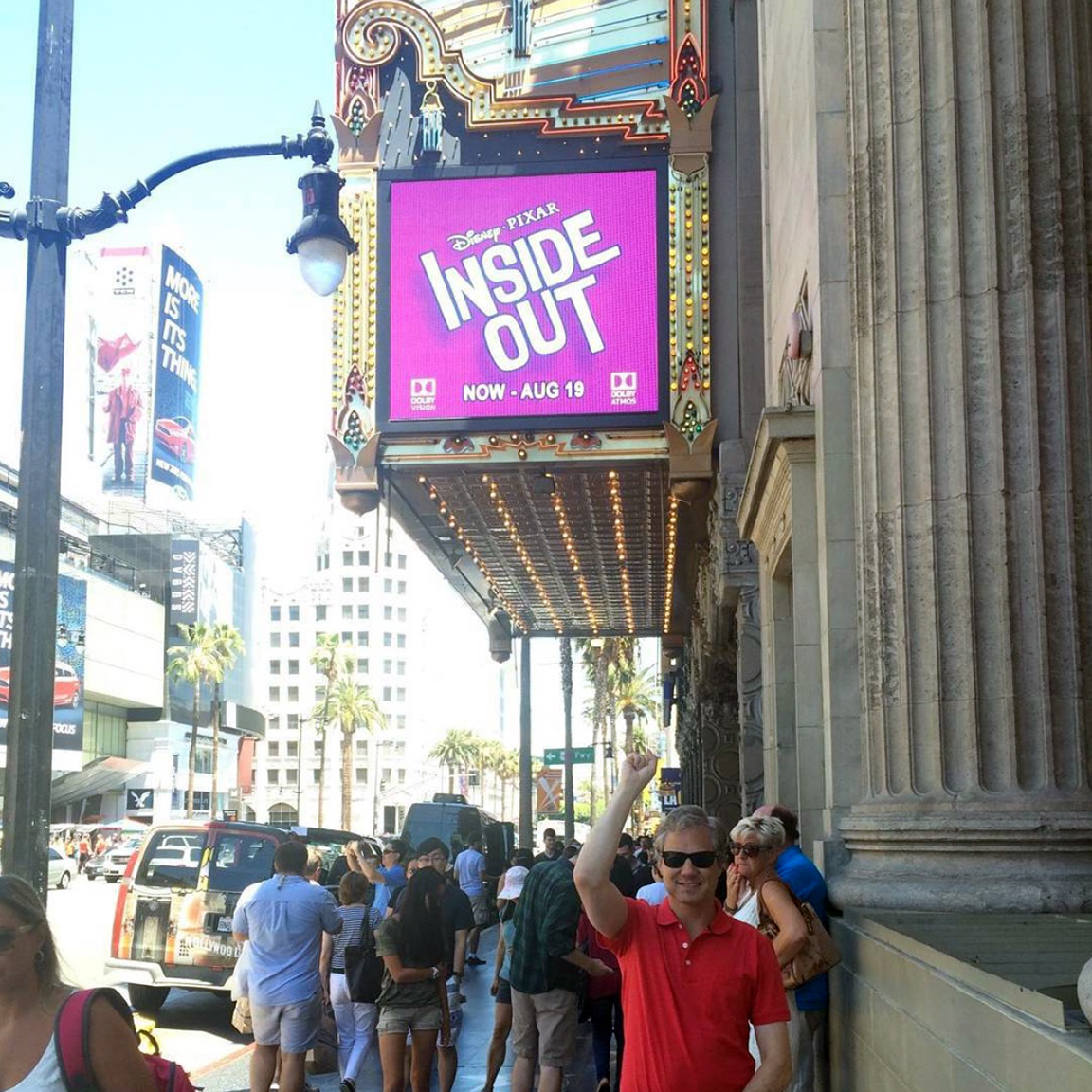
What’s even better than that is going and seeing it with an audience who reacts. Whether its negatively or positively, whatever it is, it moves people! That part for me, hearing an audience respond, I love that – watching the audience, with fresh ears and eyes, and they’re in all the way. They’re following the story, they’re paying attention, whether they love it or hate it – it moves people to react. That for me is the icing on the cake.
You know a movie like “Incredibles”, you watch it with an audience, and they’re just having so much fun, they’re laughing, they’re moved and afterwards they come out and they are talking about it. That part is really fun. It doesn’t matter if they are talking about the sound or not, that doesn’t matter to me at that point. They had an experience and that experience felt good to them.
The audiences are paying attention. They go for a story, they go to be entertained, or to be moved. As you say with a documentary film, they want to learn something about a subject. “Wow that seems really interesting, I didn’t know that.” A documentary will follow you into a different world.
For me, that’s the joys of this business, watching with an audience, working with directors, collaborating to make it the best experience for the audience that we can. That’s the joy for me.
Luckily, for all of us, Michael is as busy as ever, crafting stunning soundscapes, with stellar filmmakers, and telling captivating new stories.
Woody Woodhall is a supervising sound editor and rerecording mixer and a Founder of Los Angeles Post Production Group. You can follow him on twitter at @Woody_Woodhall

Filmtools
Filmmakers go-to destination for pre-production, production & post production equipment!
Shop Now